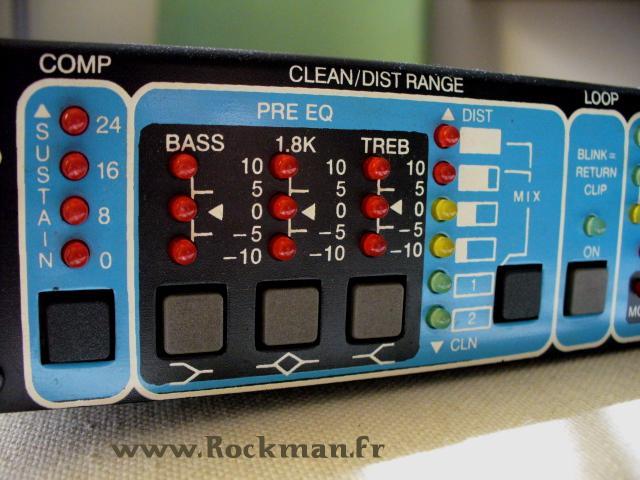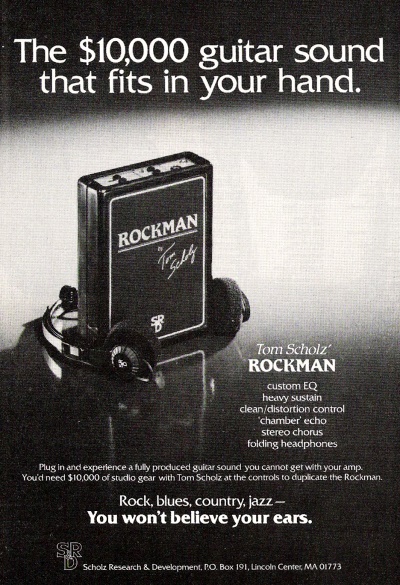|
An EQ being only a series of adjustable filters, it seems logical to address filters and EQ's as one topic, though their usage is of course different. The message is that they have exactly the same technical role, and are actually based on the same techniques and circuits.
Filters belong to the family of linear processes. It may seem contradictory with the fact their frequency response is all but linear: let’s recall what a linear process is.
- When you add two input signals, the output signal of a linear process is the sum of the two processed signals.
- When you multiply the input signal by a given coefficient, the output signal is multiplied by the same coefficient.
The following effects are therefore linear: EQ’s, filters, boosters, but also tremolo, chorus, flanger, phaser, echo, etc…
The following effects are non-linear: distortion, overdrive, fuzz, compressors, expanders, gates, etc…
Let’s note that the wah is nothing but a filter, with a specific response and a foot-control device. In other terms, a fixed wah can be simulated by any good EQ…
For a sound engineer, EQ’s and filters are used:
- to avoid the frequency overlaps within a mix
- to correct a possible weakness in an individual sound by boosting slightly a frequency range
- to control the global balance of all the frequencies at the band’s sound level (this can include the venue frequency response during a concert)
For most of the musicians, EQ’s and filters are used for one thing only: modify the harmonic distribution of the sound, in the hope of getting a better sonic result. This is the classical use of a post-distortion EQ.
 |
For a guitarist who uses distortion, EQ’s and filters have a critical role that is, unfortunately, ignored by most of us: an EQ placed before the clipping stage will control the mix between natural and artificial harmonics that now compose his sound. And that’s a complex operation…
- The input signal has a fundamental frequency with its natural harmonics
- Each of these frequencies will generate artificial harmonics during clipping: in other terms, clipping generates harmonics for each natural harmonic
- The pre-clipping filters control the gain for each frequency of the input signal, and therefore have an impact on the post-clipping artificial harmonics
- The final result must be filtered to get something pleasant to hear…
- The filters have a strong impact on the noise generated by the circuit
All in all, the pre-distortion EQ acts like the gain pot of an amp, but can do it for each frequency band. The post-distortion EQ will act like a master volume, but here again, frequency by frequency.
What manufacturers do is to determine pre-clipping and post-clipping filters that give the global voicing of their effect.
|
Since there are hundreds of possibilities, there are hundreds of possible distortion pedals and hundreds of possible amp’s voicings. Not surprising to see so many commercial products that all do the same thing! They are all built the same way, and differ, basically, by the few components of the filters. Take a good distortion, place a first EQ before it and a second one after, and you can virtually get any sound you want...
We didn’t speak about the filters, as seen by the gear designers. Filters belong to the family of linear processes, but one can also say that filters can be used to simulate any linear process… And that’s where they become extremely interesting for a gear designer!
The sound of a guitar, as we hear it on a record, is the result of a complex chain of processes. What we call a correct sound can be achieved by connecting amps, cabs, mikes, and EQ’s. That’s the classical approach. But from a technical point of view, this devices chain is a series of linear and non-linear processes.
There are two basic non linear processes : compression and clipping. In the classical approach, these processes are performed by the amp-cab-mike chain. There is one basic linear process : frequency response alteration. All the elements of a set-up alter the frequency response. In other terms, they behave exactly like filters…
 |
Fine. We have all the elements now. The mission is to create a correct guitar sound and to record it on a tape (the mission is not to create a sound that only the guitarist will hear!). This mission will be successful if we can:
- Compress gently the signal: this compression is rather electro-mechanical with an amp, but we can do it with simple electronic circuits.
- Control the final harmonics distribution (the timbre) by filters and/or EQ’s. You can do that in the cumbersome, classical manner: electronics, a cab and a mike. But you can do it with electronics only, and call one of your filters “cab sim” if you think it’s important for the marketing department.
- Add artificial harmonics on request via a clipping technique or another. The component itself is not critical, provided you know which filter is adapted: some pre-clipping filters will probably be necessary, and some post-clipping filters will certainly help.
Yes, you can also do that with several pedals plugged into a big amp, several mikes around a huge cab and hours of sound engineering in the hope of getting something nice. It’s up to you: you probably love spending thousands of dollars for every song you record.
But you can also do it with :
- A compressor – one OpAmp, one J-FET, a few caps and resistors
- A clipping stage – one OpAmp and two LED’s can do that. Note that the LED’s will light up when then clip (tubes don’t!).
- Some filters. Complex filters, but only filters.
That’s called Rockman: the $10,000 sound you can hold in your hand...
|
|
